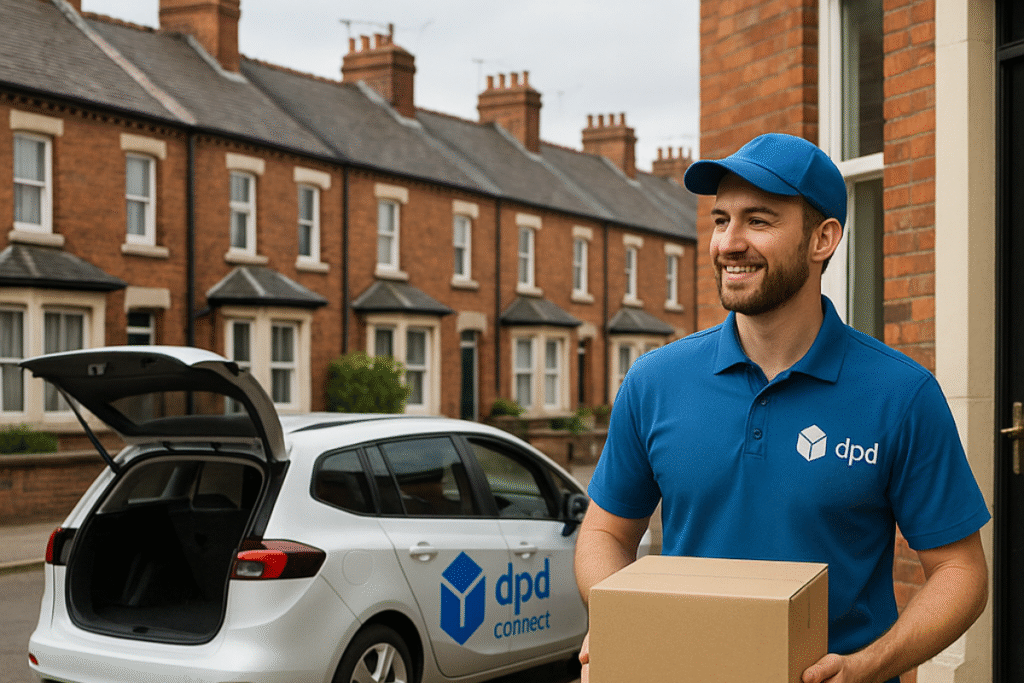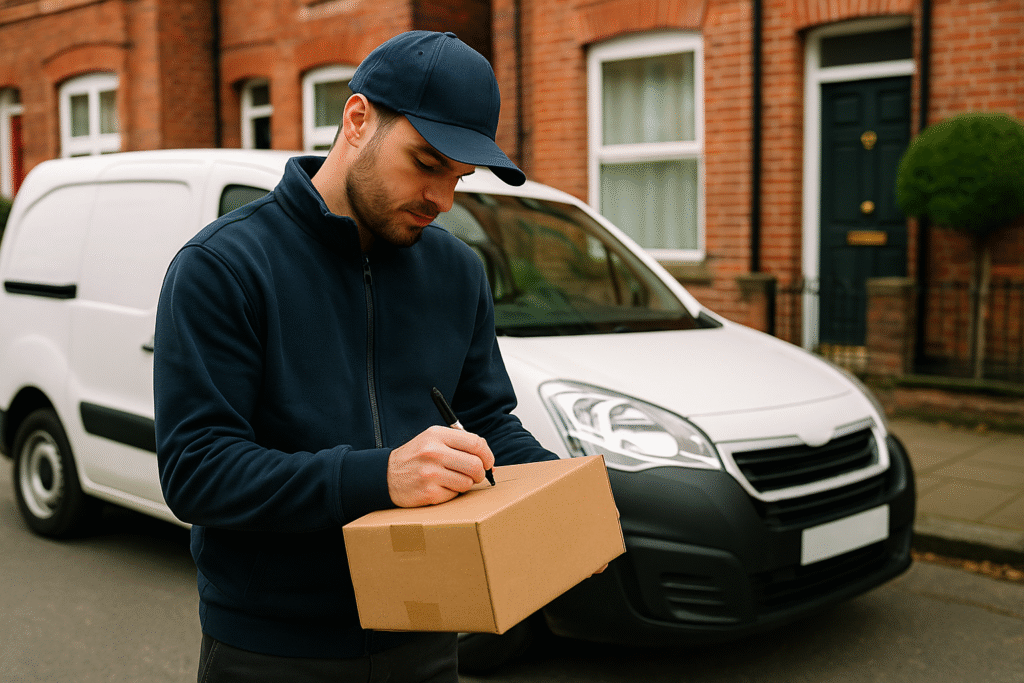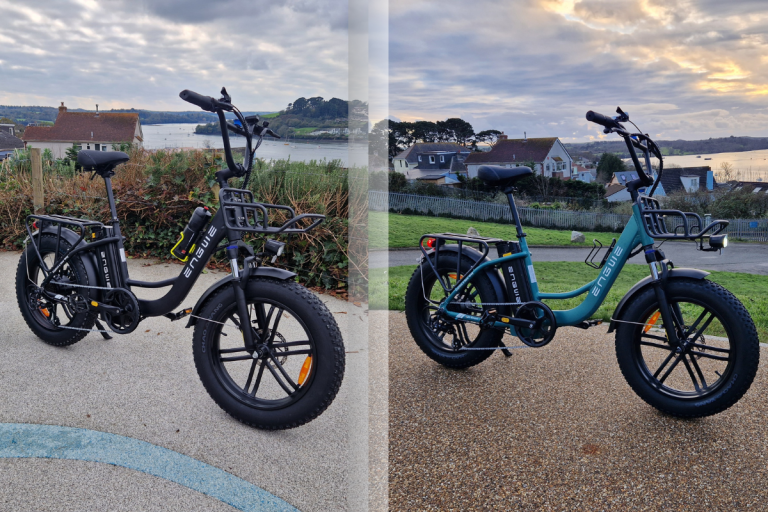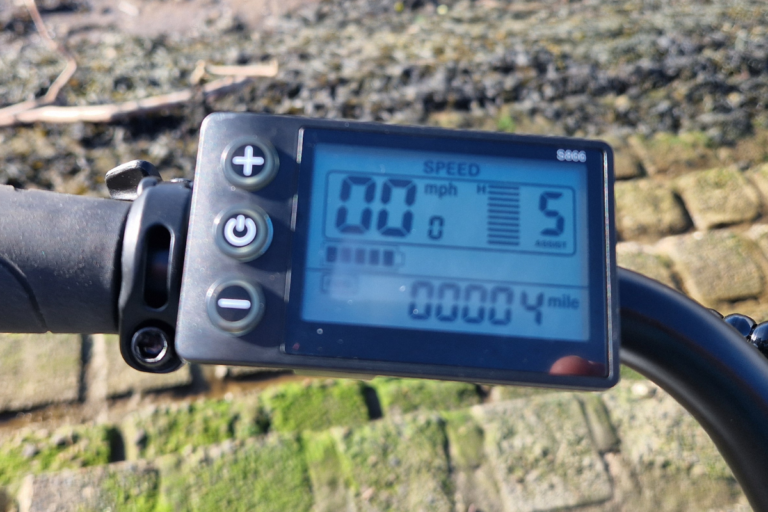What is DPD Connect?
DPD has recently launched a new parcel delivery job called DPD Connect, which is aimed at people looking for a side hustle or full-time delivery work. It looks very similar to Amazon Flex, Evri, and Yodel, but will it be a viable alternative? I’ll be trying it out in the coming weeks to see what it’s like.
With more people shopping online than ever before, the demand for fast and reliable parcel delivery continues to grow across the UK. This surge in e-commerce has created more opportunities for self-employed drivers, especially in the last-mile delivery sector, where companies need flexible workers who can meet rising customer expectations.
When can I start working for DPD Connect?
DPD Connect is currently being rolled out across the UK (although it’s not available everywhere yet). It offers multi-drop parcel delivery work using your own car or small van. The model looks very similar to Yodel and Evri, and promises more regularity than Amazon Flex. It’s designed to attract the growing number of people looking for side jobs they can fit around other commitments.
According to DPD, drivers can earn “up to £18 an hour” by completing between 80 and 120 deliveries a day, all within their local area. In reality, the pay is £1 per completed stop, so your daily earnings entirely depend on how many deliveries you make — and how many are successfully completed.
How Does It Work?
I’ve already completed the onboarding process, which is handled through the Wise app — the same platform used by some Amazon Delivery Service Providers. Payments are made weekly, which is in line with other popular delivery side-hustles. You’ll also need a Stripe account to accept payments.
The sign-up process will feel familiar if you’ve applied for gig-style delivery work before. At this point, it’s worth keeping a folder on your phone or computer with all your documents ready to go — things like your driving licence, proof of insurance, right to work in the UK, and National Insurance number — to make the process quicker and smoother. To be eligible, you’ll need the following:
- A car or van with a valid MOT and insurance
- A UK driving licence
- National Insurance number
- DVLA share code
- Proof of your right to work in the UK
Once you’ve completed onboarding and signed the electronic contract, you’ll be given training and can start working.
DPD also provides:
- A branded uniform
- Top-up business use insurance (no need for a separate ‘hire and reward’ policy)
- Access to the DPD Drive app, which helps you optimise your route and delivery workflow

Things to consider
There are some appealing aspects to DPD Connect, especially if you’re already doing other delivery jobs. The flexibility is a big draw — you can choose when to work, and since most shifts start around 11 am, it’s ideal if you’re stacking it with something like Amazon Flex in the mornings. With the potential to do routes that are local to you, you’re not driving miles out of your way just to start your round. Getting paid weekly via Stripe is another plus, and you don’t have to worry about invoicing — it’s all handled for you.
That said, there are a few things to watch out for. The £1 per stop model sounds reasonable, but failed deliveries might not be paid at all – sometimes people aren’t at home to accept the delivery, which is beyond your control and could adversely affect your daily earnings. Then there’s DPD’s reputation among drivers — it’s not exactly glowing, with past complaints about pressure and poor support. It’s also not clear how widely available this Connect programme is yet, so not everyone will be able to jump on board straight away. And like all self-employed delivery work, you’ll need to factor in fuel, wear and tear, and insurance when working out your actual take-home pay.
My Initial Plan
I’ve recently signed up to my local DPD Connect and will be attending their 2-day training shortly. My local Connect depot is near my local Amazon depot, which should make it easier for me to switch over after completing morning Amazon Flex blocks (I usually finish these around 10.30 am).
If I can manage 80 stops per day across four days (Tuesday to Friday), that’s potentially £320 from DPD. Add in three morning Amazon blocks (£62 each), and I could be looking at around £500+ per week, not including any weekend shifts or other side work.
That said, these are just projections — the true test will come once I’ve done the job for a few weeks. If unsuccessful deliveries aren’t paid for, the average hourly rate could drop quite a bit.

My First-Hand Experience with DPD Connect
After onboarding with DPD Connect, I got to see firsthand how the system works — and it’s quite different from some other gig delivery platforms I’ve used.
Once initial contact was made, I was invited to my local depot — not a traditional warehouse but a storage unit facility. It’s worth noting that DPD Connect is run by local franchisees under the wider DPD Local brand. These franchisees are responsible for hiring drivers and managing day-to-day operations in their allocated territories.
On my first day, a DPD van delivered the bags containing the parcels for the drivers to the depot, collected earlier from a nearby DPD hub. Each bag contains parcels for an individual route for a driver (most routes will have at least two bags).
The Loading Process
Loading the van was straightforward but hands-on. Each parcel must be scanned using the DPD Saturn app, and the app will display a number, which is the delivery number, e.g. 15. You then manually write this number on the parcel with a marker pen. This step is crucial for organising your deliveries later on.
After scanning and marking, it’s down to sorting the parcels into the correct numerical order in your vehicle— taking the time to arrange the parcels properly at the depot will save you time searching for parcels when making deliveries.
The parcels themselves were familiar — similar in size and shape to what you’d see with Amazon Flex: book folders, polybags, envelopes, etc. In fact, I was told that week the DPD depot had taken on an additional 10,000 parcels from Amazon!
The DPD App and Workflow
If you’re coming from Amazon Flex, be prepared for a bit of an adjustment. The DPD app, while functional, is less polished. Navigation isn’t as precise — it relies on a version of Google Maps, and instead of pinpointing properties, you’ll often have to visually locate house numbers.
One of the key differences is the delivery workflow:
- Most deliveries require the recipient to be present, and cannot be left in a safe place — unless it’s for fresh food deliveries from companies like Hello Fresh.
- On delivery, you must input the recipient’s full name into the app and take a photo of the parcel being handed over with the door open.
- If no one is home, you can deliver to a neighbour or leave it in a safe place, depending on what’s permitted by the app. For neighbours, you must input their full name, address, and take a photo of their house. You must also scan a card to confirm a neighbour or safe place delivery.
- Each delivery has a timeframe – if you are too quick, then you’ll have to wait before you can deliver. Conversely, if you’re running late, you’ll need to go fast to catch up. During my training, all deliveries were comfortably done within the allotted time.
It’s important to follow the delivery workflow to the letter — mistakes can be costly. I was told by the franchisee that if a parcel goes missing and the workflow wasn’t followed correctly, the financial responsibility falls on the driver. He shared some horror stories where drivers had been docked a significant amount of money due to delivery claims.
DPD Training at the Hub
Before fully starting, I was also invited to a one-day training session at my local DPD hub, about 30 miles from where I live. The training was done in a classroom setting, led by a trainer who was clear, concise, and very knowledgeable.
The training covered important areas like:
- Manual handling (how to lift heavy items correctly to avoid injury)
- The delivery workflow and correct app usage
- The consequences of not following the proper procedures.
We were shown real-life examples where drivers had not followed the workflow properly, and customers subsequently made claims — some were several hundred pounds, and one was over £1000. Given that DPD handles a lot of high-value items like mobile phones, this risk is very real. While following the rules keeps you protected, it’s clear that this is a much more serious responsibility compared to the likes of Amazon Flex or Evri. You can’t just doorstep parcels casually — doing so could leave you with a hefty bill.
It’s also worth mentioning that although you get paid £1 per drop, you are not paid for the time it takes to load your vehicle. From my initial experience, you should allow at least 30 minutes to an hour for loading, including waiting for the van to arrive from the hub.
Route and Earnings
The route itself was efficient. Deliveries were tightly clustered, and total mileage was low, around 15-20 miles, including the return trip to the depot. On my first ride-along, we completed 75 deliveries in just over four hours, averaging nearly 20 parcels an hour with only a couple of failed deliveries (which were delivered to a local parcel shop).
With DPD Connect paying £1 per stop, this shift would have earned £75 — not bad for around four hours’ work, although it’s important to factor in the extra unpaid time spent loading.

DPD Connect vs Amazon Flex
DPD Connect has a few clear differences compared to Amazon Flex:
- Flexibility: With Amazon Flex, you can book shifts to suit your schedule, and you can cancel a block within 45 minutes with little consequence. DPD Connect requires drivers to commit to routes a week in advance, so it’s less flexible.
- Workflow: The Amazon Flex app is smoother and offers better pinpointing of properties, while the DPD app can feel clunky and relies more on manual input.
- Parcel Handling: Expect more customer interaction with DPD, compared to the typical ‘photo-at-the-door’ Amazon Flex deliveries.
- Liability: DPD Connect drivers must be extra careful to follow the process, as errors can result in financial penalties.
Final Thoughts
Although working for DPD Connect requires more discipline and commitment, it offers more consistent work, particularly if you’re looking to combine it with something like Amazon Flex. For example, you could complete an Amazon Flex morning shift from 7:30 AM to 11:30 AM and still have enough time to reach your DPD depot — my local depot required drivers to arrive between 11:00 AM and 12:00 PM. If you earned the typical £62 for a four-hour, 45-drop Amazon Flex block and then completed 75 drops with DPD in the afternoon, you could earn around £137 a day (less expenses) for roughly 120 deliveries — a decent daily rate for a few hours’ graft. That compares very favourably when you consider that most full-time Amazon DSP drivers earn about £130 per day for 175 stops.







